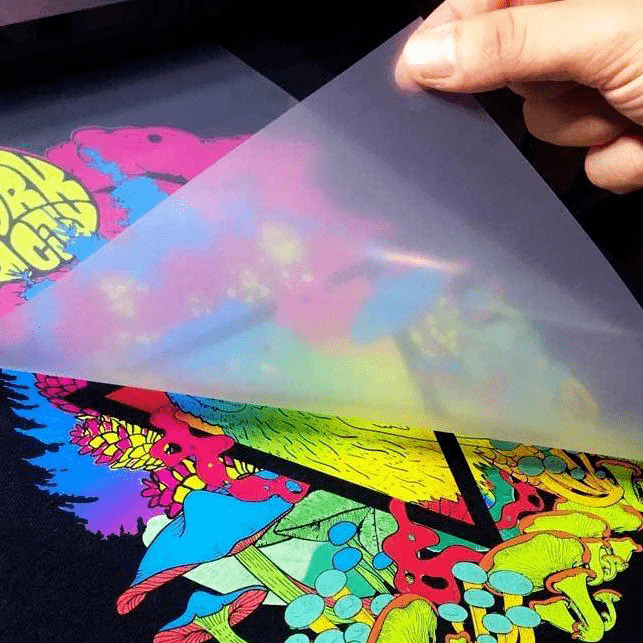DTF Printing Demystified: Whatever You Need to Understand About Direct-to-Film
Wiki Article
Ultimate Overview to DTF Printing Techniques for Magnificent Textile Styles
Embarking on the trip of mastering DTF printing methods can open a globe of possibilities for developing aesthetically exciting fabric layouts. As the fabric market remains to evolve, staying ahead of the curve with ingenious printing techniques is crucial. In this overview, we will certainly discover the intricate details of DTF printing, from realizing the basic essentials to unraveling progressed shade techniques that can elevate your designs to new heights. Stay tuned as we delve right into the subtleties of picking the ideal products, developing the printing process, and conquering common challenges to achieve stunning results.Understanding DTF Printing Basics
DTF printing, a procedure that involves moving styles from a special movie to fabrics using heat and stress, develops the structure of fabric printing methods. This ingenious method permits high-grade, lively styles to be effortlessly transferred onto numerous materials with precision and information. The very first step in DTF printing involves producing or selecting a layout that will certainly be published onto the fabric. This design is then published onto an unique movie utilizing a DTF printer, which utilizes specific dyes or pigments to guarantee color accuracy and longevity.The last result is a sensational, resilient fabric layout that is washable, adaptable, and immune to fading. On the whole, recognizing the essentials of DTF printing is vital for understanding this modern-day fabric printing strategy.
Picking the Right Fabric Products
Having actually developed the foundational principles of DTF printing techniques for fabric layouts, the following essential factor to consider hinges on choosing the proper textile materials to complement this innovative process efficiently. The success of a DTF print mostly depends on the compatibility between the picked textile and the printing technique. When choosing fabric materials for DTF printing, it is necessary to think about the material's structure, weave, and texture. Fabrics that work well with DTF printing consist of polyester blends, spandex, nylon, and other synthetic products. These textiles generally have a smooth surface area that permits in-depth and dynamic prints. Furthermore, the stretchability of these materials can accommodate the heat transfer procedure included in DTF printing without distorting the layout. It is a good idea to prevent natural fibers such as cotton or silk, as they might not produce the same degree of print quality and durability. By picking the best fabric materials, designers can take full advantage of the potential of DTF printing to develop magnificent and durable fabric designs.
Understanding the Printing Process
To stand out in DTF printing methods for textile layouts, grasping the printing procedure is crucial for achieving high-quality and constant results. The temperature, stress, and duration of warmth application need to be thoroughly managed to guarantee correct bond of the style to the textile. By honing each of these actions in the printing process, developers can consistently generate sturdy and spectacular fabric designs with DTF printing strategies.
Enhancing Layouts With Color Strategies

Furthermore, try out shade gradients can bring a sense of movement and fluidness to try this website the layout. By mixing shades seamlessly, a gradient effect can be achieved, adding a contemporary and vibrant touch to dig this the textile style. Furthermore, using shade blocking methods can produce striking and bold visuals by juxtaposing different solid shades in distinctive areas of the style.
Moreover, incorporating metal or neon colors can offer a appealing and distinct element to the fabric style, making it attract attention and exude a feeling of vibrancy. When tactically used, these color techniques can boost the general aesthetic allure of fabric designs, making them extra memorable and exciting.
Troubleshooting Common DTF Printing Issues
After exploring various color techniques to enhance textile styles, it is vital to attend to typical DTF printing problems that may occur throughout the production procedure. Additionally, issues with photo clarity and sharpness can happen due to low-resolution photos or incorrect printing methods. By being conscious of these common problems and implementing the necessary troubleshooting actions, you can boost the general high quality of your DTF printed fabric styles.Conclusion
To conclude, mastering DTF printing strategies is crucial for developing sensational textile layouts. By recognizing the basics of DTF printing, selecting the right products, and boosting layouts with shade methods, one can achieve impressive results. It is essential to troubleshoot usual problems that might develop during the printing process to ensure an effective outcome. With technique and interest to detail, one can create beautiful and one-of-a-kind fabric designs making use of DTF printing methods.DTF printing, a procedure that entails transferring styles from an unique film to textiles making use of heat and pressure, develops the structure of textile printing methods.Having actually established the fundamental concepts of DTF printing techniques for textile styles, see this site the following crucial factor to consider exists in selecting the suitable fabric materials to match this cutting-edge procedure effectively. By choosing the ideal fabric products, developers can maximize the capacity of DTF printing to develop sensational and lasting textile designs.
To excel in DTF printing methods for fabric layouts, understanding the printing process is essential for accomplishing premium and consistent results. DTF Printing. By honing each of these steps in the printing process, designers can regularly create sensational and sturdy textile designs with DTF printing strategies
Report this wiki page